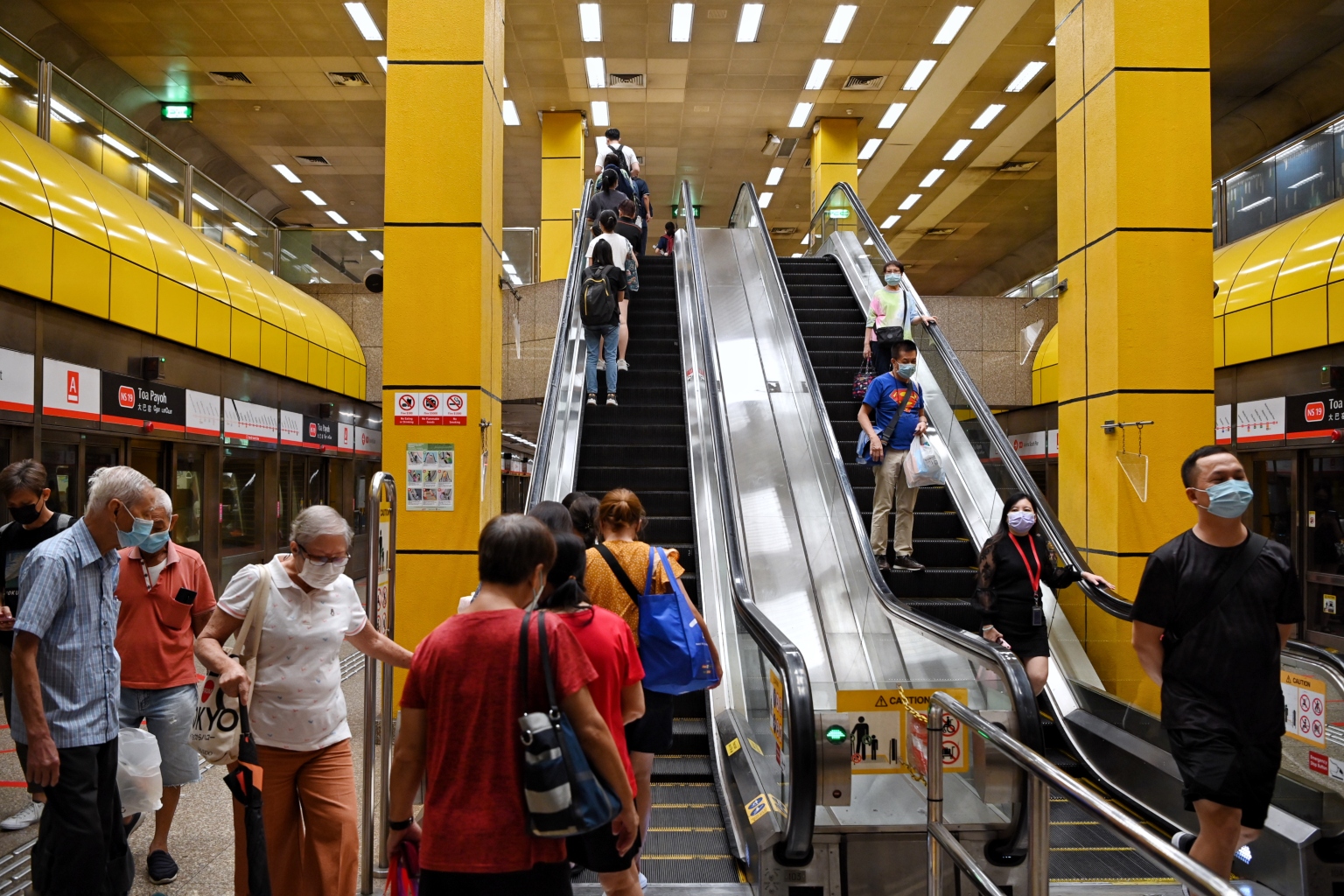6-year escalator refurbishment project at 42 MRT stations completed
Sign up now: Get ST's newsletters delivered to your inbox

During off-peak hours, the escalators move at a slower speed so that it is safer for the elderly and young children.
ST PHOTO: KUA CHEE SIONG
Follow topic:
SINGAPORE - Commuters on the North-South and East-West lines may notice something different about MRT station escalators from Wednesday (July 13).
At all stations, they now move at a slower speed during off-peak hours - 0.5m per second instead of 0.75m - so that it is safer for the elderly and young children.
Unlike before, lit-up arrows indicate the directions the escalators are moving in. Skirt deflectors - barriers between the escalator steps and the side panels - have been installed to help to prevent people's feet and clothes from getting caught in the gap.
These changes are part of a six-year $47.3 million escalator refurbishment project, which SMRT said was completed on Wednesday. A total of 231 escalators at 42 of Singapore’s oldest MRT stations were progressively upgraded over the last six years.
The project, handled by contractor company Otis, is the first major refurbishment of escalators since the MRT system - and the North-South and East-West lines - began operations in 1987.
SMRT had first estimated that works on each escalator would take between eight and 10 weeks in 2016, but this was adjusted to at least four months for all escalators after work began.
More complicated cases took longer - up to eight months to be fully refurbished - pushing back a project that had been slated to be completed by end-2021 and which was further delayed due to Covid-19.
SMRT said the upgrading of each escalator involved the removal, installation and replacement of more than 1,000 parts and major components, and that it had added new safety features such as handrail speed monitors that activate an emergency stop when a handrail slips from its groove.
Other upgrades help with future maintenance operations. These include missing step sensors that stop the escalator if a step is not properly installed and floor plate switches that alert the staff if a floor plate is not properly closed and levelled. The floor plate is the metal landing on either end of the escalator.
Mr Yap Chun Shin, 62, said he had not noticed the gradual changes of the escalators at various stations, but added that this meant work operations were quite well planned, causing minimal disruption to commuters.
He said the lit-up arrows indicating the directions of the escalators were particularly useful.
“I see the green arrow and immediately queue to use that one, instead of having to hesitate in front of the two escalators for a brief moment,” said the retiree, who used to work in engineering.
Ms Margaret Lim, 45, a performing arts teacher, said the skirt deflectors allow her to take the escalators with greater peace of mind.
“I like to lean against the side and sometimes, I get worried that my loose clothing will get stuck. This removes that worry,” she said.
The upgrades to the North-South and East-West lines’ escalators bring them up to date with the escalators in other newer MRT lines.
So far, the slower escalator speed during off-peak hours is already being implemented on SMRT's Thomson-East Coast Line.
SBS Transit said more than 30 escalators on the North-East Line and Downtown Line are also operating on this system. It added that it has spent about $1.26 million in retrofitting works for this purpose.

